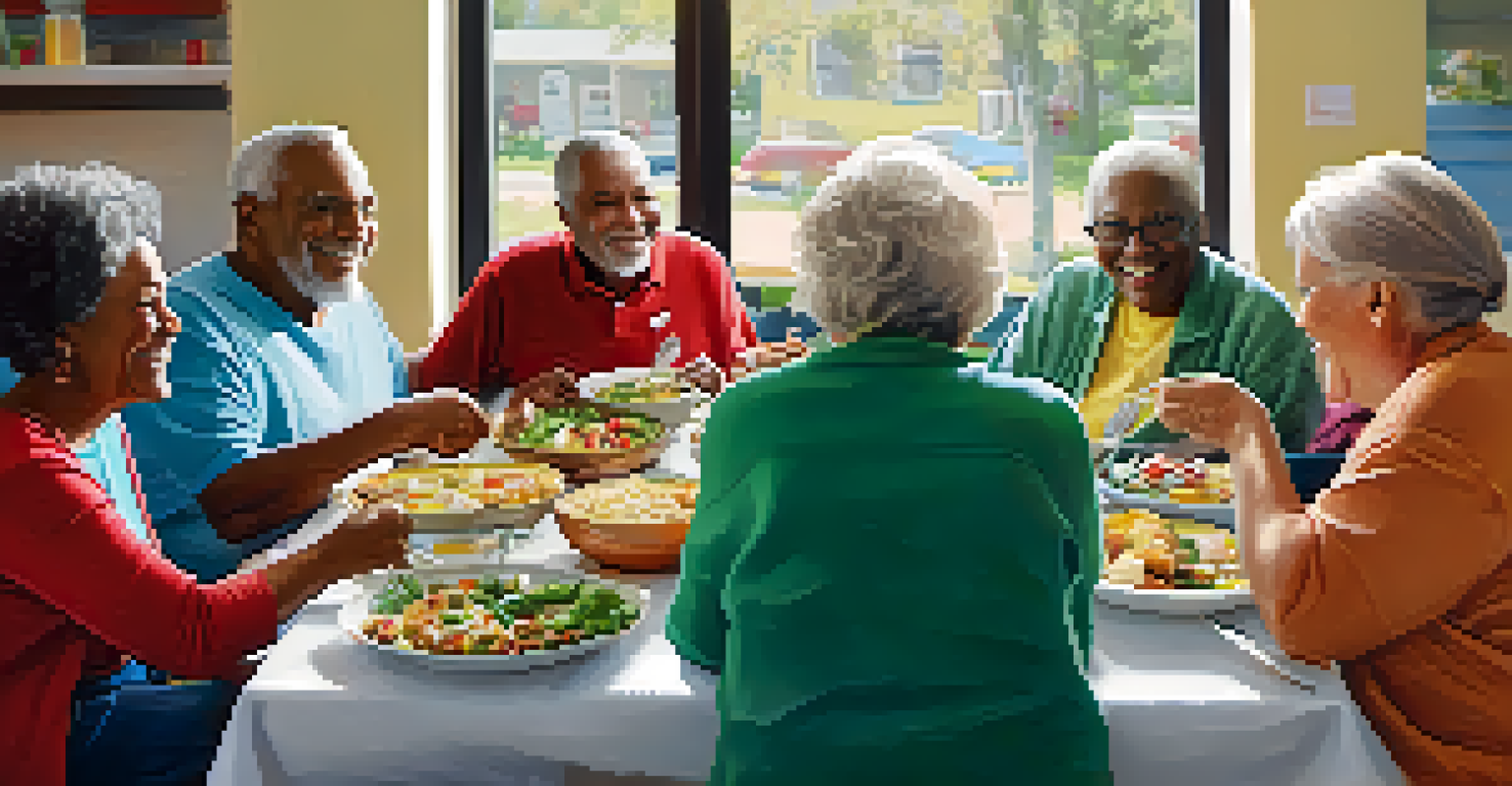Understanding Health Disparities in the Aging Population

Defining Health Disparities in Older Adults
Health disparities refer to the differences in health outcomes and access to healthcare that exist among various population groups. In the aging population, these disparities can manifest in various ways, from access to medical services to the prevalence of chronic diseases. Understanding these differences is crucial for developing effective interventions and policies to improve health equity among older adults.
Health disparities are not just a matter of health; they are a matter of justice.
Many factors contribute to health disparities, including socioeconomic status, race, ethnicity, and geographical location. For instance, older adults in rural areas may have limited access to healthcare facilities compared to those in urban settings, leading to significant differences in health outcomes. This disparity can exacerbate existing health issues and create a cycle of poor health among vulnerable populations.
Addressing health disparities requires a multi-faceted approach that considers the unique needs of different groups within the aging population. Efforts to reduce these disparities can lead to improved health outcomes and a better quality of life for older adults. Ultimately, fostering health equity is essential for creating a more just society.
Socioeconomic Factors Influencing Health Outcomes
Socioeconomic factors play a significant role in determining the health of older adults. Those with higher incomes often have better access to healthcare services, nutritious food, and safe living environments, contributing to better overall health. In contrast, older adults from lower socioeconomic backgrounds may struggle to afford necessary medical treatments or healthy food options, leading to poorer health outcomes.

For example, consider a retired individual living on a fixed income who cannot afford medications for chronic conditions. This financial strain can lead to unmet health needs, resulting in complications that could have been easily managed with proper care. Such situations highlight the critical link between socioeconomic status and health, especially among the elderly.
Health Disparities Affect Older Adults
Health disparities in older adults can arise from factors like socioeconomic status, cultural beliefs, and geographical location, leading to unequal access to healthcare.
Programs aimed at alleviating poverty and improving access to resources for older adults can help bridge these gaps. By addressing the underlying socioeconomic disparities, we can significantly improve health outcomes and enhance the quality of life for many aging individuals.
Cultural Influences on Health Disparities
Cultural beliefs and practices significantly influence health behaviors and perceptions among older adults. Certain cultural groups may have unique health practices that impact how they view medical interventions, which can create disparities in health outcomes. For instance, some communities may prefer traditional remedies over conventional medical treatments, potentially delaying necessary healthcare.
The greatest threat to our planet is the belief that someone else will save it.
Additionally, language barriers can hinder effective communication between healthcare providers and older adults from diverse backgrounds. This lack of understanding can lead to misdiagnoses or unaddressed health issues, further exacerbating health disparities. Understanding and respecting cultural differences is essential for providing equitable healthcare to the aging population.
Healthcare systems must be aware of these cultural nuances and work towards creating inclusive environments. Culturally competent care can help bridge the gap, ensuring that older adults receive the support and treatment tailored to their unique needs.
Access to Healthcare Services
Access to healthcare services is a fundamental aspect of health equity for older adults. Many aging individuals face barriers such as transportation issues, inadequate insurance coverage, or lack of nearby healthcare facilities. These obstacles can prevent them from receiving timely medical attention, leading to worsening health conditions.
Imagine an elderly person living alone in a rural area who has no means of transportation to get to the nearest clinic. This situation not only limits their access to preventive care but can also result in delayed treatment for acute health issues. Addressing these accessibility challenges is vital for improving health outcomes in this population.
Socioeconomic Status Impacts Health
Older adults with lower socioeconomic status often face barriers in accessing healthcare and necessary resources, contributing to poorer health outcomes.
Innovative solutions, such as telemedicine and mobile health clinics, have emerged as effective ways to enhance access to healthcare. By leveraging technology and community resources, we can ensure that older adults receive the necessary care regardless of their geographical location.
Chronic Diseases and Health Disparities
Chronic diseases, such as diabetes, hypertension, and arthritis, disproportionately affect the aging population, making health disparities even more pronounced. These conditions often require ongoing management, which can be difficult for older adults facing barriers to care. The interplay of chronic diseases and health disparities can create a cycle of declining health and increased healthcare costs.
For example, consider an elderly individual with diabetes who cannot afford regular check-ups or necessary medications. The lack of management can lead to severe complications, like heart disease or kidney failure, further straining their health and financial situation. Recognizing this cycle is crucial for addressing health disparities among older adults.
Targeted interventions that focus on prevention and management of chronic diseases can help mitigate these disparities. Programs that provide education, resources, and support for older adults with chronic conditions can significantly improve their health outcomes and overall quality of life.
Mental Health and Aging Populations
Mental health is an often-overlooked aspect of health disparities in older adults. Issues such as depression, anxiety, and cognitive decline can significantly impact the quality of life for aging individuals. Unfortunately, stigma and lack of awareness around mental health can prevent older adults from seeking help, exacerbating their conditions.
Consider an elderly person who feels isolated due to mobility issues and subsequently develops depression. This scenario illustrates how physical health limitations can lead to mental health challenges, creating a cycle that is difficult to break. Addressing mental health is as crucial as managing physical health, especially for older adults facing various challenges.
Community Support Enhances Well-Being
Community resources such as meal programs and transportation services are crucial in bridging healthcare gaps and improving the overall quality of life for older adults.
Creating supportive environments that promote mental health awareness and access to resources is essential. By fostering open conversations about mental health, we can encourage aging individuals to seek help and improve their overall well-being.
Community Resources and Support Systems
Community resources play a vital role in addressing health disparities among older adults. Support systems, such as senior centers, meal programs, and transportation services, can help bridge gaps in healthcare access and enhance the quality of life. These resources not only provide practical assistance but also foster social connections that are crucial for mental and emotional well-being.
For instance, a community meal program can offer nutritious food options while providing a space for older adults to socialize, reducing feelings of isolation. Such initiatives can significantly improve health outcomes by addressing both physical and mental health needs within the aging population.

Investing in community resources and support systems is essential for creating an equitable healthcare landscape. By empowering older adults through accessible programs, we can promote healthier lives and foster a sense of belonging in our communities.